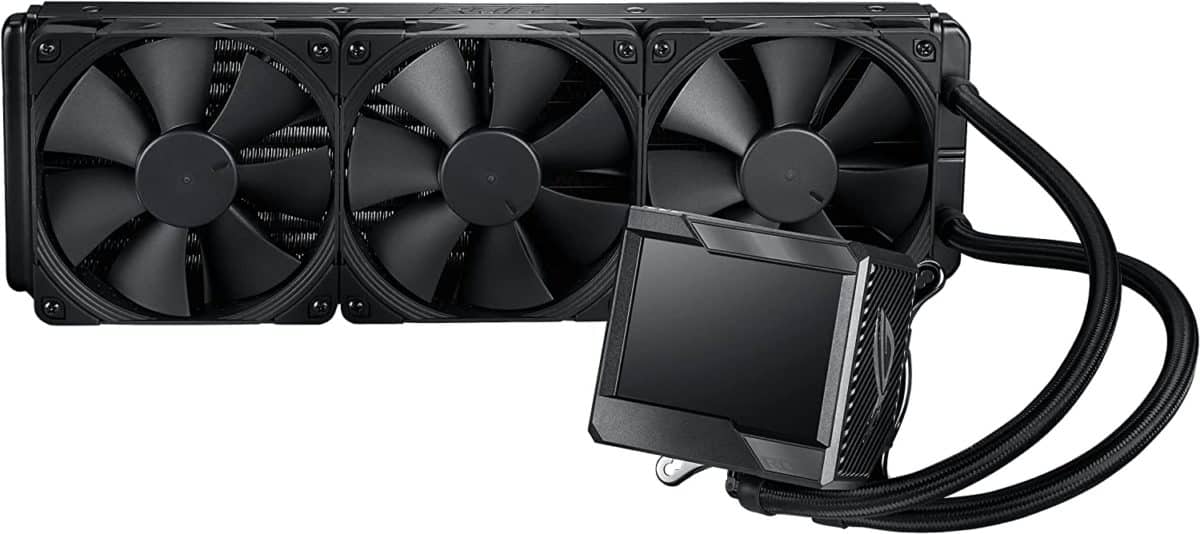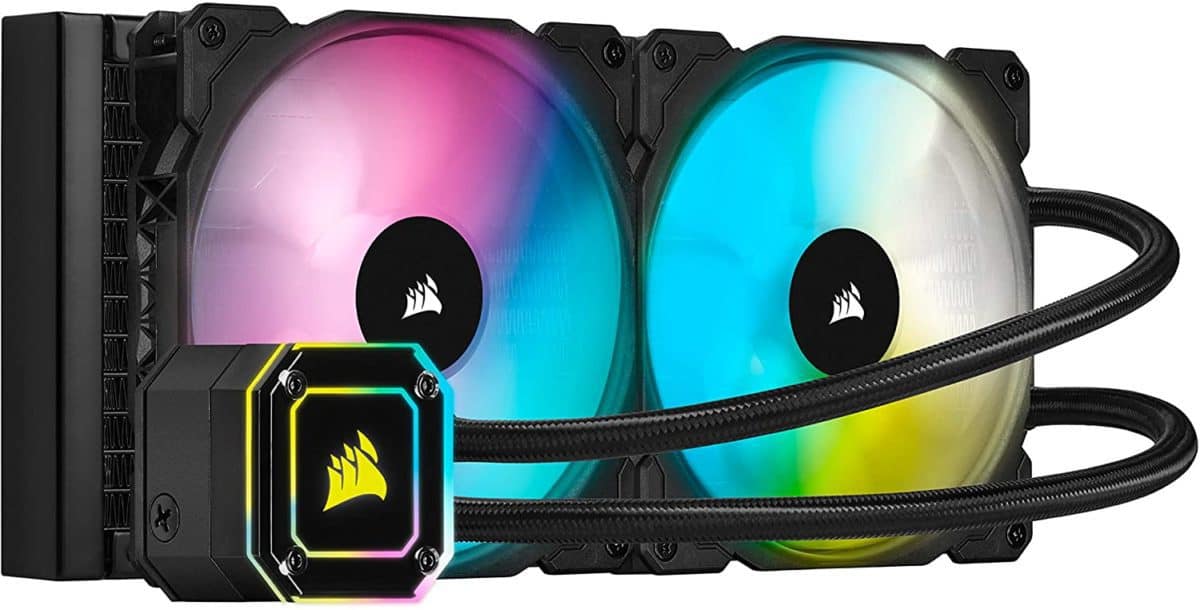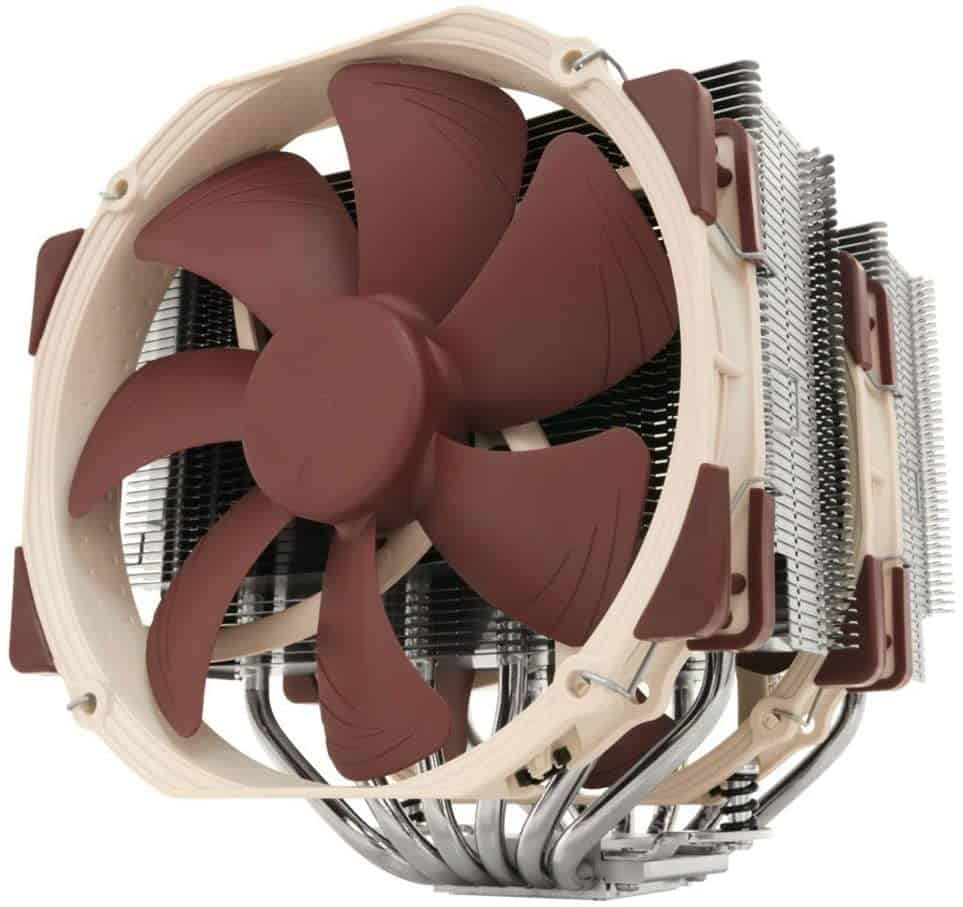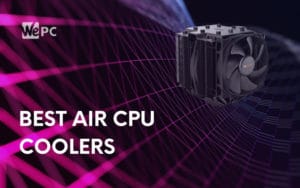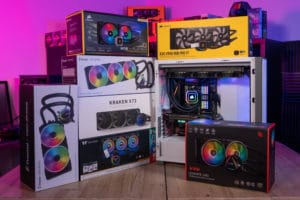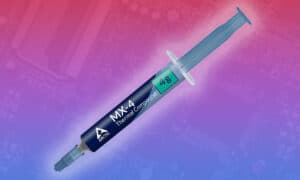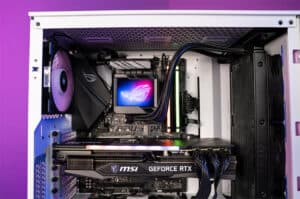Best CPU Coolers in 2024 – best air & liquid cooling
We take a look at the best fan and AIO CPU coolers on the market for a range of different budgets and needs
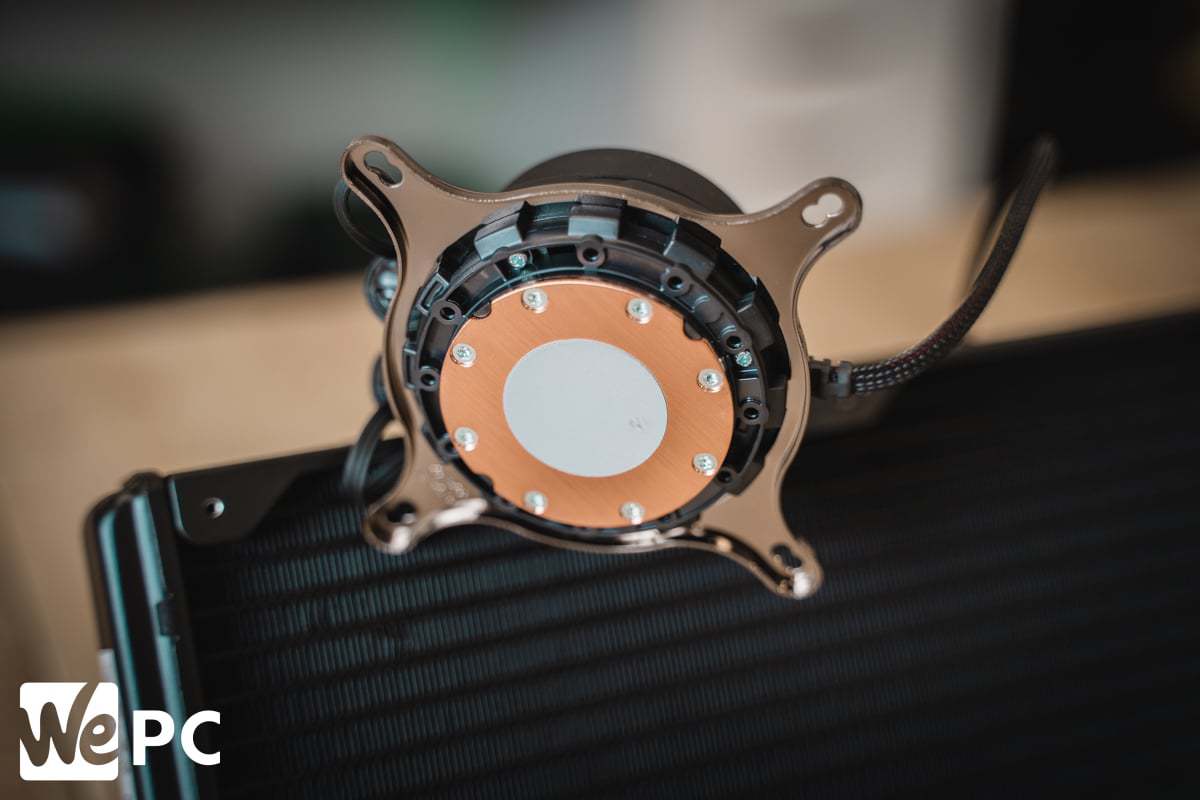
WePC is reader-supported. When you buy through links on our site, we may earn an affiliate commission. Prices subject to change. Learn more
Looking for the best CPU cooler in 2024? You’re in the right place. While the best CPU cooler will certainly help to keep your gaming PC running at its best, it is not always a crucial part of the equation. There are a number of factors that contribute to a gaming PC’s performance, and the best CPU cooler is an important factor. Whether you just want to push your gaming rig further and gain a performance boost or do serious overclocking, you are going to need a CPU cooler that suits your needs and meets those demands. Poor cooling will lead to subpar performance.
CPU coolers come in a variety of shapes and sizes. Air coolers, for example, use fans to move air across the CPU; water coolers, on the other hand, employ a closed-loop system to do so. In general, air coolers are more affordable than water coolers, but they are also less effective at cooling down the CPU. Water coolers are more expensive, but they are also more effective at keeping the CPU cool. As a result, it is important to consider both the cost and the performance of a CPU cooler before making a purchase.
You can always get by on the stock cooler that comes with your CPU but in any case, cooling this component is vital to its longevity and performance. But what if your CPU doesn’t come with a stock cooler:? As most of the new CPUs don’t, we’re required to think up our own solution and find a cooler that suits us on our own.
Today’s best cooling deals
- Corsair iCUE H115i Elite CAPELLIX XT Liquid CPU Cooler – Save 28% now!
- ASUS TUF Gaming LC II 360 ARGB AIO Liquid CPU Cooler – Save 13% now!
- NZXT Kraken 280 RGB CPU Liquid Cooler – Save 20% now!
- Thermaltake TH360 ARGB Sync V2 CPU Liquid Cooler – Save 20% now!
- Thermaltake TH120 ARGB – Save 25% now!
- Razer Hanbo Chroma RGB All-In-One Liquid Cooler – Save 18% now!
- IN WIN Luna AL120 Triple Pack ARGB LED Fan – Save 12% now!
- MSI MAG CoreLiquid C240 CPU Liquid Cooler – Save 12% NOW!!
- Lian Li UNI Fan SL120 V2 RGB Black Triple Pack with Controller – Save 18% NOW!
- Lian Li Galahad II LCD 360 AIO – Save 5% now!
Best CPU Coolers in 2024
Here we will review the best CPU coolers on the market. If you don’t have time to read the full article, then we have chosen the Asus ROG RYUJIN II 360 CPU Cooler as our best CPU cooler in 2024. Without further delay, here they are.
ASUS ROG RYUJIN ii 360mm
Asus ROG RYUJIN II 360 CPU Cooler

CPU Block Dimensions
78.15 x 87.5 x 81 mm
Socket Support
Intel: LGA 1150, 1151, 1152, 1155, 1156, 1200, 1366, 2011, 2011-3, 2066 AMD: AM4, TR4*
Fans
3x Noctua NF-F12 InductrialPPC 2000 PWM Fans
Features
3.5″ Full Color LCD Screen
- LCD Screen
- High Performance
- Aesthetically, one of the best looking AIOs on the market
- Expensive
- More affordable options that perform similarly
When it comes to keeping your high-end CPU in check, the ASUS ROG RYUJIN II we reviewed is an excellent choice. This high-end CPU cooler is designed to handle the most demanding CPUs in terms of both performance and TDP. Originally designed for the 12th generation platform, the RYUJIN can be used with a wide range of hardware, thanks to its impressive cooling capacity.
One of the standout features of the RYUJIN ii is its LCD screen, which can display any image or GIF of your choice. Furthermore, the screen has full AIDA64 support, allowing you to display real-time system state information on the 3.5-inch full-color display. This feature not only looks great, but it’s also functional and can be very useful for monitoring your system’s performance.
In addition to its impressive LCD screen, the RYUJIN ii boasts 380mm sleeved tubing made of thick rubber, which not only adds to the cooler’s durability but also enhances its overall aesthetics. The tubing is also designed to be more visually appealing than the bland, standard tubing found on many other coolers.
All in all, the ASUS ROG RYUJIN ii is a premium CPU cooler that offers excellent performance and a range of features that make it an attractive choice for high-end users looking to keep their CPUs cool and stable.
Corsair iCUE H150i Elite Capellix
Corsair iCUE H150i Elite Capellix XT Liquid CPU Cooler

Item Dimensions LxWxH
15.63 x 4.72 x 1.06 inches
Brand
Corsair
Cooling Method
Water
Noise Level
34.1 dB
- Quiet Running Volume – This system should rarely break 36dBA.
- RGBs – bright and punchy, these RGBs will breathe new life into your case.
- Pump Design – A split-flow copper cold plate and a ton of micro-skived fins enable you to push your CPU to the limit.
- Price – You may have to liquidate your assets to afford this liquid asset.
- Installation – The fans can be difficult to screw into place.
The Corsair H150i iCUE Elite Capellix is a highly regarded CPU cooler that has been on the market for some time. As a popular brand in the cooling industry, Corsair has established a reputation for delivering top-notch products, and the H150i is no exception.
One of the standout features of the H150i is its impressive cooling performance. This is thanks in part to its large 360mm aluminum radiator and three Corsair 120mm RGB fans. These components work together to keep your CPU cool and stable, even during demanding tasks.
However, the H150i isn’t just a workhorse – it’s also designed with aesthetics in mind. The cooler is available in both black and white, and users have the option to add RGB fans for extra flair. With its sleek and modern design, the H150i is sure to complement any high-end system build.
For those who want even more customization options, the H150i can be upgraded with an LCD screen. This upgrade allows users to display system information and custom images on the cooler’s 3.5-inch screen, similar to the RYUJIN ii. With this upgrade, the H150i becomes almost identical in both performance and design to the RYUJIN ii.
All in all, the Corsair H150i iCUE Elite Capellix is an excellent choice for users looking for a reliable and visually stunning CPU cooler.
Noctua NH-D15
Noctua NH-D15
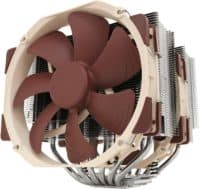
Type
Air
Max RPM
1500 RPM
Max Noise
24.6 dB
Dimensions
(H)165 x (W)150 x (D)150 mm
- Solid thermal performance
- Excellent acoustic performance
- User-friendly mounting system
- Outstanding build quality
- Comes with (2) 140mm fans
- Relatively expensive
- Hefty size
Noctua is a very popular brand in this industry thanks to its proficiency in cooling products, and the Noctua NH-D15 is a proven cooling master. It performs just as well as a handful of liquid CPU coolers in the mid-range category, which also makes it one of the best CPU coolers not just for gaming but in general too.
Looking at what comes with the package, you have two 140mm fans. These fans were remarkably quiet even when running at max while playing games. With a 24.6 dbA sound level, it’s unlikely you’ll hear it running. While the performance isn’t massively different to the D14, this does seem to perform better acoustically.
A negative for some is going to be the excessive size, the heatsinks are rather large, meaning your RAM might not fit depending on your setup and there could be clearance issues in certain cases. While it’s true that you can move the front fan up to give more RAM clearance the positives of its size outweigh the negatives as long as it fits into your setup.
Noctua has accounted for this with a second, smaller version: The NH-D15S. However, the performance was noticeably worse than this model meaning you could find a better solution outside of these two products. Some regard the color as hit-and-miss but it’s hardly noticeable once in your system and I personally quite liked the aesthetics. Despite what you make of the design this CPU is a serious bit of kit and one of the few air coolers that can keep a modern overclocked CPU cool.
NZXT Kraken Z63
NZXT Kraken Z63

Type
Liquid
Max RPM
1800
Max Noise
38 dBa
Dimensions
30(H) x 143(W) x 315(D) mm
- Excellent high TDP thermal performance
- Incredible aesthetics
- LCD screen
- Expensive
NZXT’s Kraken line has been growing in popularity in recent years and it isn’t just down to their high-end build quality and dazzling design. The NZXT Kraken Z63 is the latest iteration to the already impressive X63, only this features an LCD panel on the pump. While the panel offers nothing more than an aesthetic touch, it’s unique and a step forward for those who want more than just raw performance. Now, there are 360mm options out there that are better suited to higher TDP overclocks but we feel the Z63 offers the perfect balance of aesthetics, cooling performance, acoustic performance, and compatibility, with this likely to fit in a wider range of PC cases.
The two 140mm fans really do a great job of dissipating that heat and the included CAM software is one of the better ones out there, with impressive customization and intuitive controls. If the extra cost for the LCD panel is too much, we understand and the X63 performs just as well but for supreme aesthetics and cooling performance, the Kraken Z63 is easily one of the best AIO coolers out there at the moment.
Scythe Ninja 5 CPU Air Cooler
Scythe Ninja 5 CPU Air Cooler
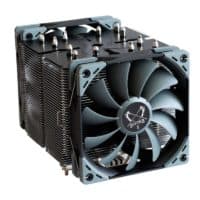
Type
Air
Max RPM
800
Max Noise
14.5 dBa
Dimensions
(H)135 x (W)155 x (D)180 mm
- Excellent thermal performance for the price
- Extremely quiet
- Stylish design
- Large size could raise compatibility issues
The Scythe Ninja 5 CPU cooler is one that many consider rivaling the impressive Noctua D15 when you factor in the price. This is nearly half the price of the Noctua and offers similar levels of thermal performance and solid acoustic performance too. This is one of the quietest fan coolers on the market and is by no means little, as we see a large heat sink and two 120mm fans. the heatsink is fed by six heat pipes, distributing the heat across the large heatsink. The fans may not be as effective as Noctua’s but these do a great job of circulating cool air through the fins and producing top-notch results.
The cooler features 2 x PWM fans with fluid dynamic bearings and they only go up to 800RPM so noise is always kept below a maximum of 14.5 dBa. As you would expect from a cooler marketed as quiet it features rubber corners to limit noise from vibrations which is a nice touch. This cooler supports a wide range of sockets from both Intel and AMD and will keep a top-of-the-line CPU at a reasonable temperature. Installation is actually relatively straightforward forward it is just the sheer mass of this cooler that makes it a bit trickier than a normal-sized one. This is being recommended as it is truly one of the quietest coolers on the market and the fact it comes in at a budget price is superb.
Thermaltake Floe
Thermaltake Floe
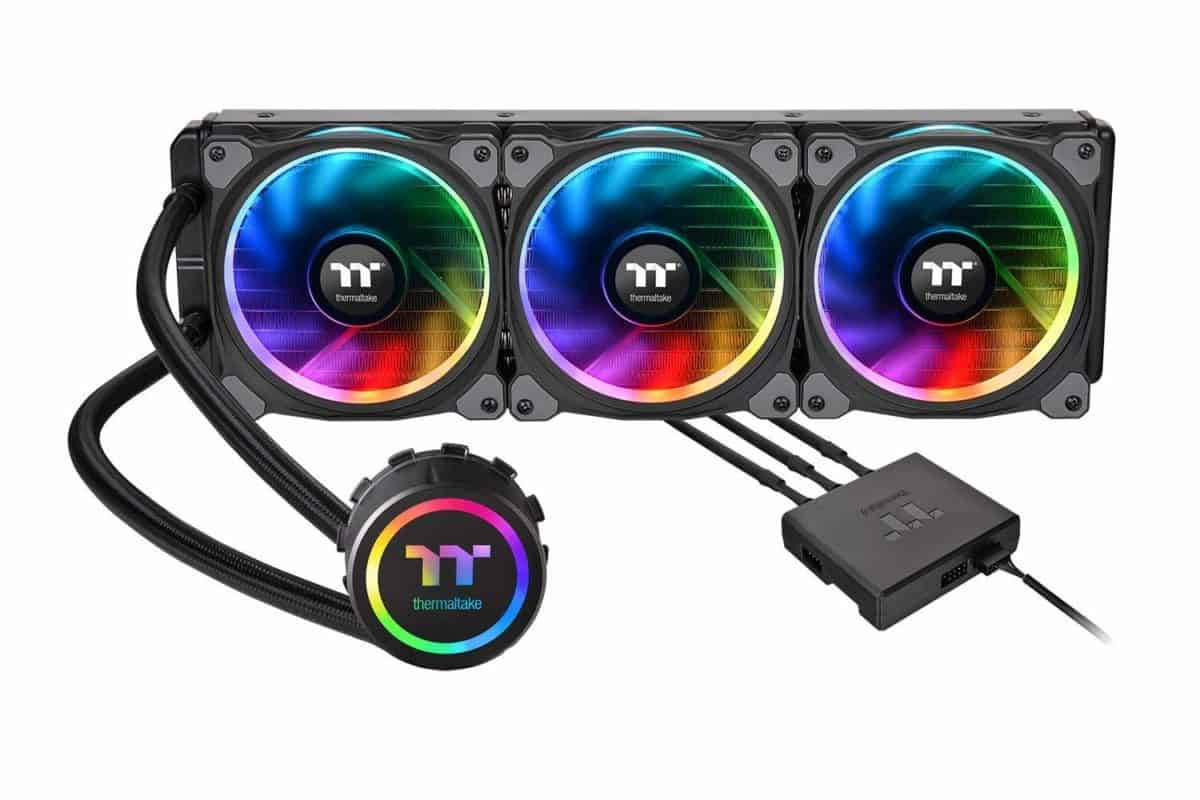
Type
Liquid
Max RPM
1400 RPM
Max Noise
24.7 dB
Dimensions
H(394) x W(120) x D(52) mm
- Lighting is compatible with most motherboard headers
- Quiet operation
- Unrivaled RGB lighting
- Pump is quite noisy
- Very expensive
Our top RGB CPU cooler comes in the form of the massive Thermaltake Floe Triple Riing RGB 360 TT. This cooler features some of the best RGB lighting you can find on this list and comes with Thermaltake’s “Riing” fans as standard, which have three lighting loops. This cooler is a 360mm rad size; so you will need a case big enough for that, but it’s worth noting that the extra cables for the lighting add clutter.
The CPU block lighting can sync up with your trio of fans, giving you quite an impressive display. The product comes with Thermaltake’s fan controller, allowing you to add extra Thermaltake Riing fans to your case. The cooling performance may not be as good as some of the coolers on this list, but with the quality aesthetics, we can allow for a few degrees here or there. This AIO is surprisingly quiet though with the fan’s max RPM only going to 1400. While this may not be ideal for a powerful overclocked CPU, it still offers good enough thermal performance to make it into this list!
Cooler Master Hyper 212 Black Edition
Cooler Master Hyper 212 Black Edition
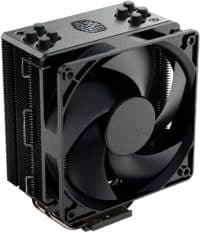
Type
Air
Max RPM
2,000 RPM
Max Noise
26 dBa
Dimensions
(H)120 x (W)77 x (D)158.5 mm
- Cooling performance is outstanding
- Relatively quiet
- Great value
- Limited for higher TDP CPU overclocking
For those looking to cool their CPU on a budget, the Cooler Master Hyper 212 Black Edition is one of the best budget PCU coolers on the market. This model is a successor to the incredibly popular EVO and does so with impressive performance considering its price.
This “no-thrills” cooler utilizes four heat pipes and aluminum fins effectively and only produces a max fan noise level of 26 dBa, which is actually relatively quiet but largely depends on the RPM you set this to. Other features include precise airflow with a CFM of 42, a smart fan sensor to stop any cable snagging, and a wide array of CPU socket support.
The performance is technically the worst in the roundup but that is only if you have this going head-to-head with some of the best coolers in the game. The fact remains, that not everyone needs huge heatsinks or liquid cooling, and a steady performer like this can be a perfect fit for many.
Ryzen 7000 series and Intel 14th-gen
Both Intel 14th gen and the Ryzen 7000 series run incredibly hot and need a large cooler with a high cooling capacity to keep at an acceptable temperature.
We managed to throttle the 13900K by 10% in our testing, all this was thanks to a particularly stressful stress test from Aida64 Extreme. Although we never expect you to reach this level of CPU stress under normal circumstances, we still feel you shouldn’t be able to throttle with a 360mm AIO. Has Intel packed too much into its CCD?
Ryzen is a similar story, although we never actually achieved any thermal throttling, we were close. The 7600X reached a toasty 95 Celsius during our stress tests, with the 7900X not too far behind. Bear in mind, that’s just with PBO enabled, we have no hope for manually overclocking these chips, or trying to increase the voltage in any way. Doing so tends to skyrocket temps and with Ryzen only having 5 Degrees of wiggle room, it’s safe to say we’ll see some throttling in that scenario.
We have the best cooler pages for both of these CPU types since they are kind of in a league of their own.
Things to consider
When buying a CPU cooler there is more to consider than just ‘will it fit’. Below are a few key factors that you should go over and understand before making that final purchase.
Performance
All the CPU coolers on our list are proven to perform well in relation to their cost. A cooler’s only job is to keep temperatures low and give you, the consumer, more bang for your buck from your CPU.
So having a solid performing cooler can help you squeeze extra power from your CPU if you go down the overclocking route and it’s best to have it as cool as you possibly can.
Noise level
CPU coolers are expected to be loud when running at max which is often the case if in a game for example. Air coolers generally produce more sound than liquid coolers but not always. Cooler manufacturers test the max noise levels so we can see what noise impact certain coolers will have on our system.
Reliability
It’s important to go with manufacturers that produce high-quality products and this is especially true when it comes to liquid cooling solutions.
There have been cases where the closed-loop ‘liquid’ coolers have leaked so we have tried to ensure quality suggestions!
Budget
Often any aftermarket cooling solution is better than the stock fan that comes with certain CPUs. If you’re unsure how powerful your fan should be after reading everything here, then it’s best to go overboard as it’s safer than not cooling your CPU enough.
If you buy an extra powerful CPU cooler, then you might not need to upgrade it when you upgrade your CPU next. If money is tight then save your cash and go for a solid air cooling solution.
CPU TDP
Before you can determine what size cooler you need(and how much money you should budget) you first need to know how much heat your CPU generates.
Thankfully this is a lot easier than you’d think since you really just need to know the TDP.
This information is normally on the CPU box and should tell you everything you need to know.
If you don’t have the CPU box anymore, simply go online and type in the model number of your CPU and head straight to the specifications tab and look for the TDP.
Should you use air or liquid CPU coolers in 2024?
Both CPU air coolers and CPU liquid coolers have their advantages and disadvantages, and the better option depends on your specific needs and preferences.
CPU air coolers are typically more affordable and easier to install than CPU liquid coolers. They also tend to be more reliable since they have fewer moving parts and are less likely to leak. Additionally, some high-end air coolers, such as Noctua NH-D15 and be quiet! Dark Rock Pro 4, can provide excellent cooling performance that is on par with or even better than some liquid coolers.
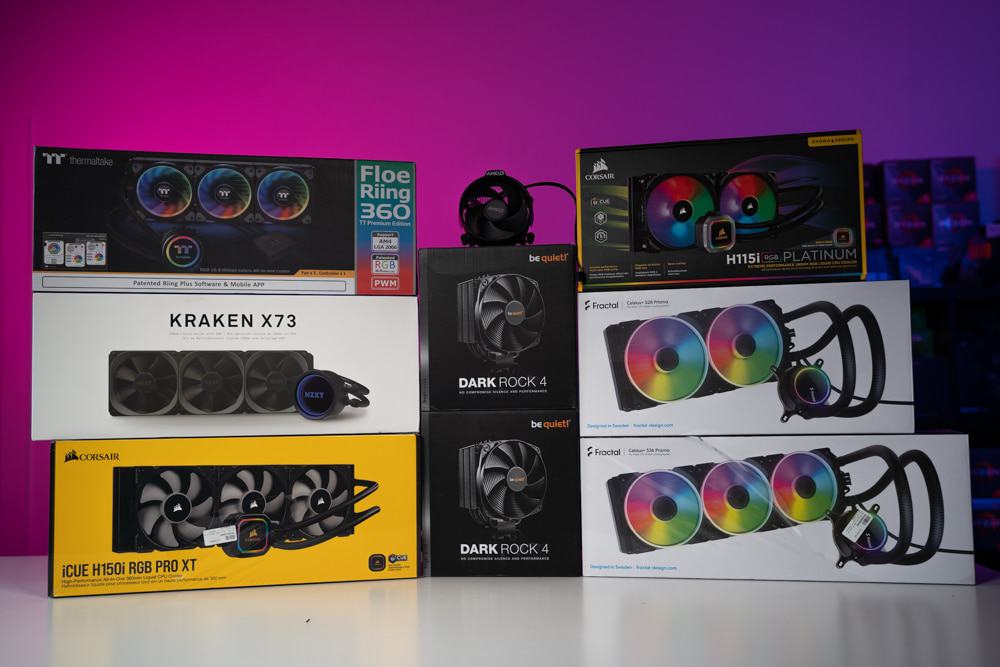
On the other hand, CPU liquid coolers can offer superior cooling performance, especially for high-end CPUs that generate a lot of heat. They are also more visually appealing since they often come with RGB lighting and sleek designs that can enhance the overall aesthetic of your PC. However, liquid coolers tend to be more expensive than air coolers and require more maintenance, as you need to periodically check for leaks and replace the coolant.
Ultimately, the decision between a CPU air cooler and a CPU liquid cooler comes down to your specific needs and preferences. If you have a limited budget and want a hassle-free cooling solution, an air cooler may be the better option. If you have a high-end CPU and want the best cooling performance and aesthetics, a liquid cooler may be worth the investment.
Why are CPU coolers so important?
CPU coolers are important for PC operation because they help regulate the temperature of the CPU and prevent it from overheating. Overheating can cause the CPU to slow down or shut down in order to prevent damage, which can negatively impact performance and stability.
A properly functioning cooler helps maintain the ideal temperature range for the CPU, ensuring that it can operate at maximum speed and efficiency. In extreme cases, overheating can cause permanent damage to the CPU, requiring costly repairs or replacement.
A good cooler helps extend the lifespan of the CPU, improve system stability, and prevent performance throttling, making it an important component in any system.
Related cooling pages
If you enjoyed this guide, why not check out some of our similar guides that may help you with your purchasing decision?
Other useful links
Final word
That concludes the best CPU coolers currently on the market. We have included several air and liquid options, with coolers to suit various budgets and needs. Hopefully, this article will assist you in your quest for a new CPU cooling solution, no matter which direction you choose to go in.

